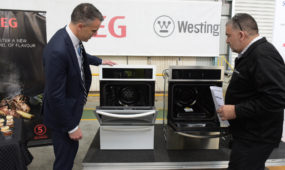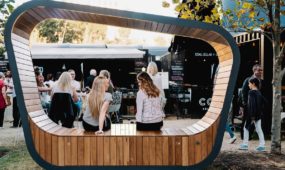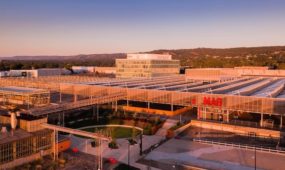Cool solution for CO2 refrigeration in hot climates
Manufacturing
Two new South Australian technologies have combined to create what researchers claim to be the world’s most efficient air-cooled carbon dioxide refrigeration system.

Sign up to receive notifications about new stories in this category.
Thank you for subscribing to story notifications.
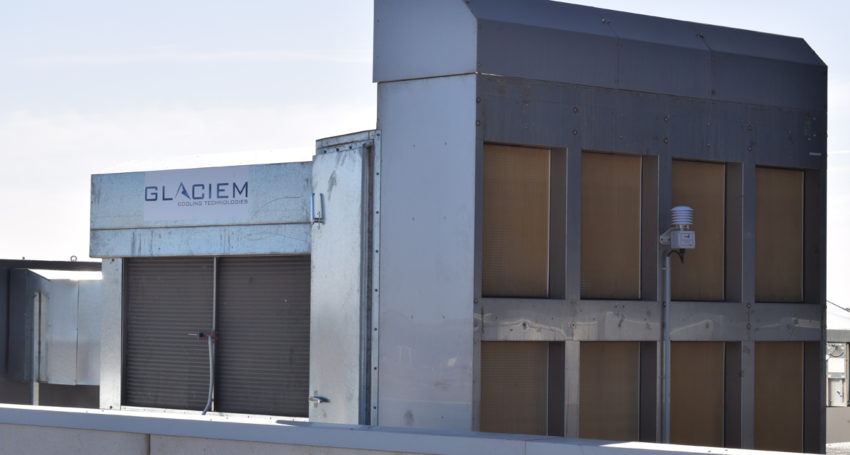
The new system is being hailed as being of particular importance for use in hot climates where CO2 refrigeration systems have traditionally performed poorly.
Adelaide-based company Glaciem Cooling Technologies is now on a commercialisation pathway with the system and plans to target the Middle East market.
Natural refrigerants such as CO2 (R744) have become more common in recent years as traditional synthetic refrigerants are phased out due to their harmful environmental impact.
Previous CO2 systems in hot climates use cascade systems, which is basically another refrigeration system operating in series with the CO2 system. These systems are efficient but the secondary refrigeration unit still contains a synthetic refrigerant.
Glaciem Cooling Technologies in conjunction with researchers from the University of South Australia have developed a unit that uses dew point technology to pre-cool air before it enters the refrigeration system’s condenser.
The system also has a thermal energy storage component that can store excess electricity from sources such as solar PV. The -6C Phase Change Material (PCM) storage system can then release the thermal energy as cold air to run the refrigeration system when electricity prices are high.
The dew-point cooling component is provided by fellow South Australian refrigeration company Seeley International, whose patented Climate Wizard indirect evaporative technology is among the most efficient in the world.
The air-cooled CO2 refrigeration system has been operating at The Bend Motorsport Park, about 100km southeast of the South Australian capital Adelaide for about 15 months, providing UniSA and Glaciem with more than a year’s worth of clean data in a commercial setting.
The first commercial freezer and cold room is servicing The Bend’s main restaurant and has a 23kWr capacity with 100kWh of thermal energy storage (TES).
Lead researcher Professor Frank Bruno said testing showed the R744-only system had operated efficiently over the past 12 months, including on a day in January when the ambient temperature at the track reached 47.5C and many conventional refrigeration systems around the state failed.
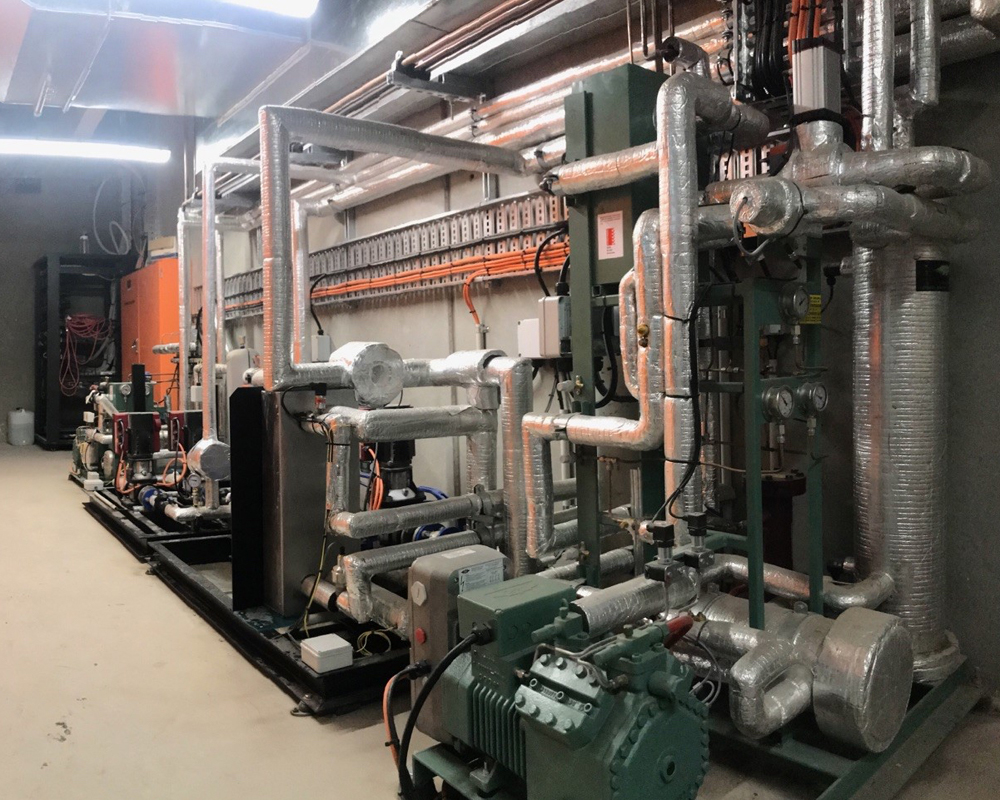
Glaciem’s commercial trial unit at The Bend Motorsport Park in South Australia uses a dew point cooler to pre-cool air before it enters the condenser.
Glaciem is a senior industry partner with UniSA and has its offices imbedded at the university’s Mawson Lakes Campus.
“Every day we’ve got our researchers working with people from the company and vice versa and this outcome would not have been achieved without the close collaboration that we have,” Professor Bruno said.
“CO2 is an efficient refrigerant but it is not efficient when ambient temperatures go above 25C so what we’ve done is we’ve been able to keep the ambient conditions around the condenser below 25C.
“We’re actually trying to get the message out there about CO2 refrigeration because the conventional HFC systems are being phased out due to the damaging effect they have on the environment whereas CO2 is an environmentally friendly refrigerant.”
The new refrigeration system was a finalist last week for the ANSTO Eureka Prize for Innovative Use of Technology, Australia’s top science awards.
Professor Bruno previously won a Eureka Prize for his low cost thermal energy storage invention.
Glaciem Cooling Technologies Managing Director Julian Hudson said he planned to unveil three more commercial projects across a variety of industries in the coming weeks as the South Australian company transitioned from an R&D startup to a commercial business over the next 12 months.
He said the company was now looking for additional investment, grants and export opportunities to help fast track commercialisation.
“We’ve now got a year’s worth of clean data and it shows that it is the most efficient air-cooled refrigeration system in the world that uses carbon dioxide, which is a natural refrigerant,” Hudson said.
“We’re looking to take that next step into manufacturing and marketing so we can have a product that comes in four or five different sizes and obviously once you start producing more you are able to achieve some economies of scale, which also brings the cost of the product down.
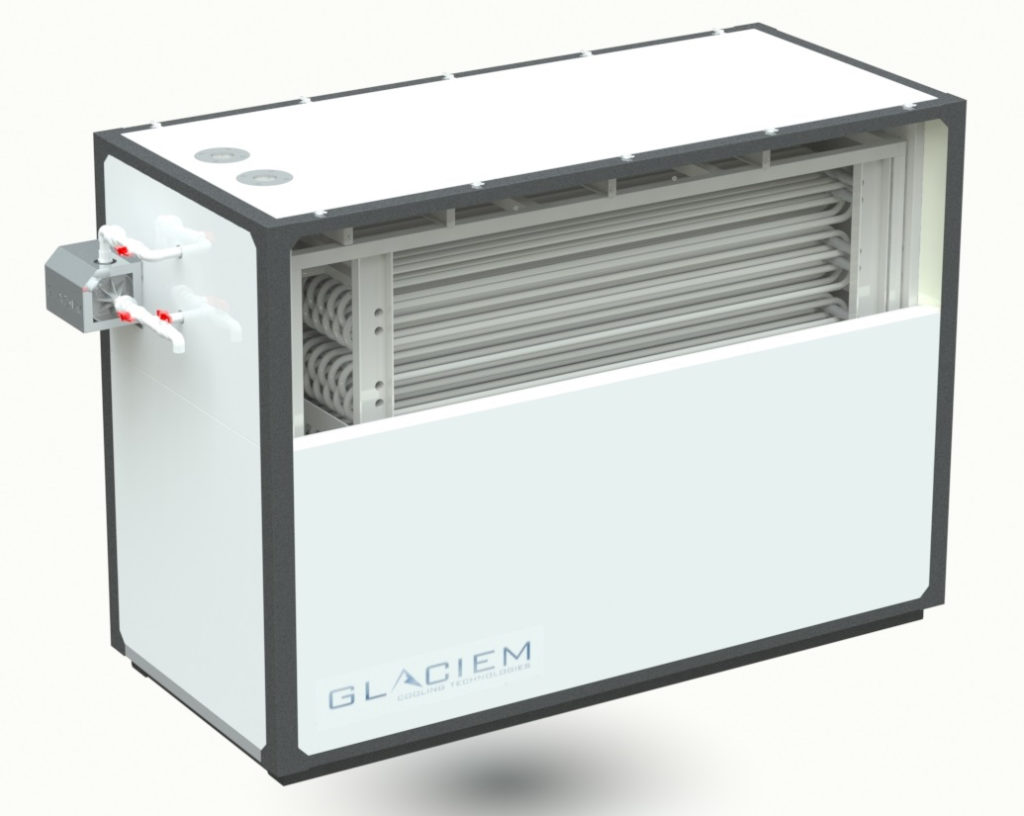
Glaciem’s PCM thermal energy storage unit.
“Our main focus is the Middle East because it’s a very big market and an extreme climate, which suits us. We’ve identified this technology will fit very well in supermarkets and we hope to come up with a smaller solution for convenience stores.”
The system also uses an intelligent energy management forecasting algorithm to collect information from multiple internet sources such as the National Energy Market pricing forecast and weather data as well as data from the site including state of TES charge, current electrical demand and refrigeration load.
This information allows the software to continuously adjust the onsite control system enabling the unit to operate at its highest efficiency point. It also optimises the onsite generation of renewable energy and offers a technical hedge to users that are exposed to spot market electricity pricing fluctuations.
Hudson said the TES and renewable energy components were vital for reducing the carbon footprint of the refrigeration system because the fossil fuels traditionally burned to generate the electricity to power refrigeration systems were as damaging to the environment as the synthetic gases the systems used.
He said the Middle East was also an ideal market because several countries in the region were still using ozone depleting refrigerants gases such as R22 and were loathe to switch to HFC because they were also being phased out in many places.
“So our technology is a perfect jump for them to a natural refrigerant while still having that high efficiency during hot weather,” Hudson said.
“The other thing we found in testing is that even in cooler climates our system was still more efficient than the current systems because of some of the design aspects.
“The university has done some excellent work particularly around the control system.”
Seeley International has recently launched a domestic version of its Climate Wizard, which has reduced its size by about a third.
Hudson, who moved to Australia from the UK about 15 years ago, said this would also help reduce the size of the refrigeration system.
He said the commercial systems would continue to be built in South Australia, which has a long history of advanced manufacturing.
“Coming from Europe you think of Australia sort of as the wild west but you come to realise that because of the climate and the size of the country, Australia has a unique set of challenges that only Australians can really deal with so you get a lot of innovation that you don’t get in many other places,” he said.
Jump to next article

